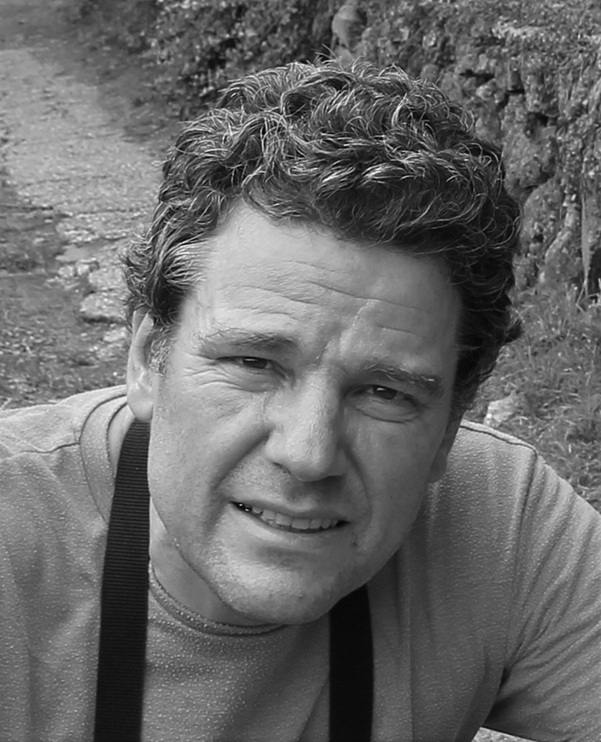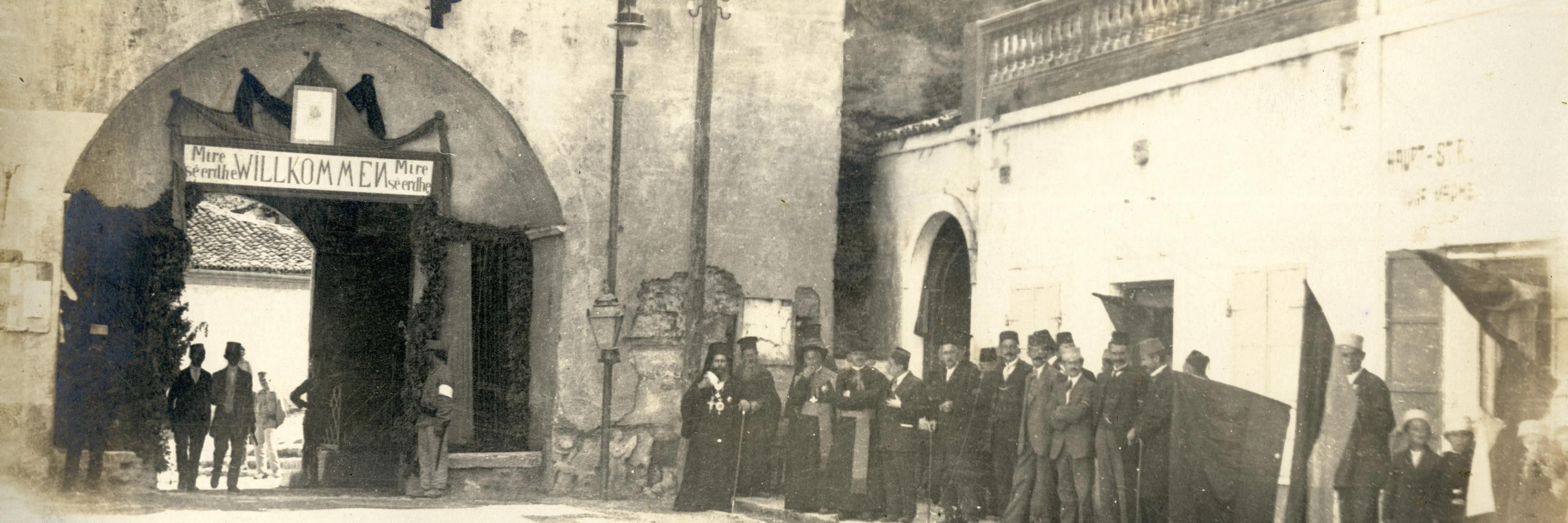The Rise of Assertive Peacebuilding in Bosnia-Herzegovina (1992–2002)
Contestation, Learning, and Adaptation in a Shifting Political Arena
(project of the Humboldt University of Berlin, Department of History - Chair for Southeast European History, funded by the Leibniz Association)
Background:
From the outset, the Bosnian War was strongly shaped—though not determined—by international engagement. Early efforts were feeble: lightly armed peacekeepers were deployed into a situation of intense violence with no peace to keep, while humanitarian responses often merely alleviated suffering without preventing it.
Over time, however, international intervention became increasingly assertive. First, in March 1994, U.S.-led pressure helped end the “war within the war” between Bosnian Croats and Bosniaks, resulting in the Washington Agreement.
From then on, the international community’s role intensified. By arming and training the Croatian Army and launching a sustained NATO air campaign against Bosnian Serb positions, international actors played a decisive role in ending the war. These efforts culminated in the Dayton Peace Agreement (DPA), signed in November 1995, which formally ended hostilities.
As the implementation of the DPA’s civilian provisions faltered, the Peace Implementation Council expanded the authority of the High Representative. This included powers to impose binding decisions (decrees) when local parties failed to agree, and to remove public officials who obstructed implementation. Initially, these increasingly intrusive measures were met with massive resistance—particularly from nationalist actors seeking to undermine the unified Dayton framework, however weak it may have been. However, by 2002, these extraordinary powers were regularly used—and, crucially, largely respected—despite the Office of the High Representative lacking direct executive authority.
Research Aims:
This research project investigates the gradual rise of assertiveness in the international intervention in Bosnia-Herzegovina as the result of complex interactions within a contested and shifting political arena. It addresses the following interrelated questions and analytical puzzle:
- Why did the international intervention become assertive only gradually and hesitantly?
- How did local Bosnian actors assess, negotiate, and adapt to growing international pressure—whether by resisting, yielding, cooperating, or manipulating it?
- In what ways did these local-international interactions shape both the evolving nature of the intervention and the political structure of post-war Bosnia-Herzegovina?
By exploring these questions, the project aims to shed light on the long-term impact of international intervention, the processes of institutional learning, and the contested emergence of the political order that defines Bosnia-Herzegovina after 1992.
The scope of the research
Given the project's interest in institutional learning at both higher and lower levels of intervening international organisations (IOs), the research will examine two interrelated scales:
- The headquarters level, including Sarajevo-based missions and BiH/Federation-wide structures; and
- The field level, where implementation dynamics and adaptations often differed significantly.
The primary field-level case study will focus on Southern Bosnia-Herzegovina, centring on the city of Mostar, where I began field research for my dissertation in August 1995. I subsequently worked there intermittently for international organisations — first for the European Union Administration of Mostar (EUAM) in 1996, and later for the Office of the High Representative (OHR) between 1997 and 2002.
This region was a focal point of the conflict between Bosniaks and Bosnian Croats, the latter aiming to establish the separatist entity of Herceg-Bosna along the southwestern corridor of Herzegovina bordering Croatia. As such, the area represents a critical site in the post-war contest over the unity of Bosnia-Herzegovina — making it a particularly revealing case for analysing how international assertiveness and local responses evolved over time.
Overall Project Context: Reordering Yugoslavia, Rethinking Europe (IfZ)
This research is part of the collaborative project Reordering Yugoslavia, Rethinking Europe: A Transregional History of the Yugoslav Wars and the Post-Cold War Order (1991–1995), funded by the Leibniz Association. The project brings together historians and regional experts from the Leibniz Institute for Contemporary History (IfZ), the Leibniz Institute for East and Southeast European Studies (IOS), and the Humboldt University of Berlin, exploring how the Yugoslav Wars reshaped international norms, borders, and the post-Cold War European order.
For more, click here.
[https://www.ifz-muenchen.de/fileadmin/user_upload/Neuigkeiten_2023/SAW_REYUG_Projektbeschreibung.pdf]
CVs
Hannes Grandits

Hannes Grandits is a historian specialising in Southeast European history. He has held the Chair of Southeast European History at the Humboldt University of Berlin since 2010. His research focuses on social history, borderlands, and historical transformations in the Balkans during the 19th and 20th centuries.
He studied History, Social Studies and Southeast European History at the University of Graz, where he earned his PhD in 1996 and completed his habilitation in 2006. Between 1993 and 2001, he worked at the Department of Southeast European History at the University of Graz, first as a scholarship holder and later as a research fellow. He was a Junior Fellow at the International Research Centre for Cultural Studies (IFK) in Vienna (1997), a guest researcher at the Max Planck Institute for Social Anthropology in Halle (2001), and an Erwin Schrödinger postdoctoral fellow at the Centre for Comparative History of Europe in Berlin (2002–2003). From 2003 to 2008, he taught Southeast European history at the University of Graz, and in 2008/09 he held a professorial substitute position at LMU Munich.
He has led and participated in a range of international research projects and networks. Between 2013 and 2020, he directed a DAAD-funded cooperation programme with universities in Belgrade, Sarajevo, Zagreb, Skopje, Koper, and Pula. He is a core faculty member of the MA in Global History (HU/FU Berlin) and co-coordinator of the Joint MA in European History. In 2015, he was visiting professor (directeur d’études invité) at EHESS in Paris.
Kristóf Gosztonyi

Kristóf David Gosztonyi is a political scientist, historian, and social anthropologist working on international intervention, local governance, and armed violence. His regional focus lies on Bosnia-Herzegovina, Mexico, and Afghanistan. Currently, he is a researcher at Humboldt University Berlin and the Leibniz Institute for Contemporary History (IfZ) within the project “Reordering Yugoslavia, Rethinking Europe” (Leibniz-Kooperative Exzellenzprogramme). He also works in a second project on “Devolving the Monopoly on Violence” at the Osnabrück University.
Educated in social anthropology, Balkan studies and economics at the Freie Universität Berlin (M.A. 1994; Dr. phil. 2003) and in political science at Yale University (1996–97, DAAD scholarship), he has worked in international institutions and academic research since the mid-1990s. Between 1998 and 2002, he served with the Office of the High Representative (OHR) in Mostar, Bosnia-Herzegovina, and as Associate Field Officer with UNHCR in Tamil Tiger–controlled areas of Sri Lanka. From 2003 to 2009, he worked as senior consultant for Control Risks with a focus on the Western Balkans and Southeast Europe. From 2010 onward, he was affiliated with the European Stability Initiative and became co-founder of ARC GbR Koehler & Gosztonyi, working on international development.
His academic career includes positions at the Freie Universität Berlin (SFB 700), the University of Osnabrück, and as project lead at the Berghof Foundation and Stanford University. His recent research explores patterns of militia governance, traditional institutions, and the learning dynamics of international actors during the Bosnian war. He continues to advise development actors and security policy institutions.




